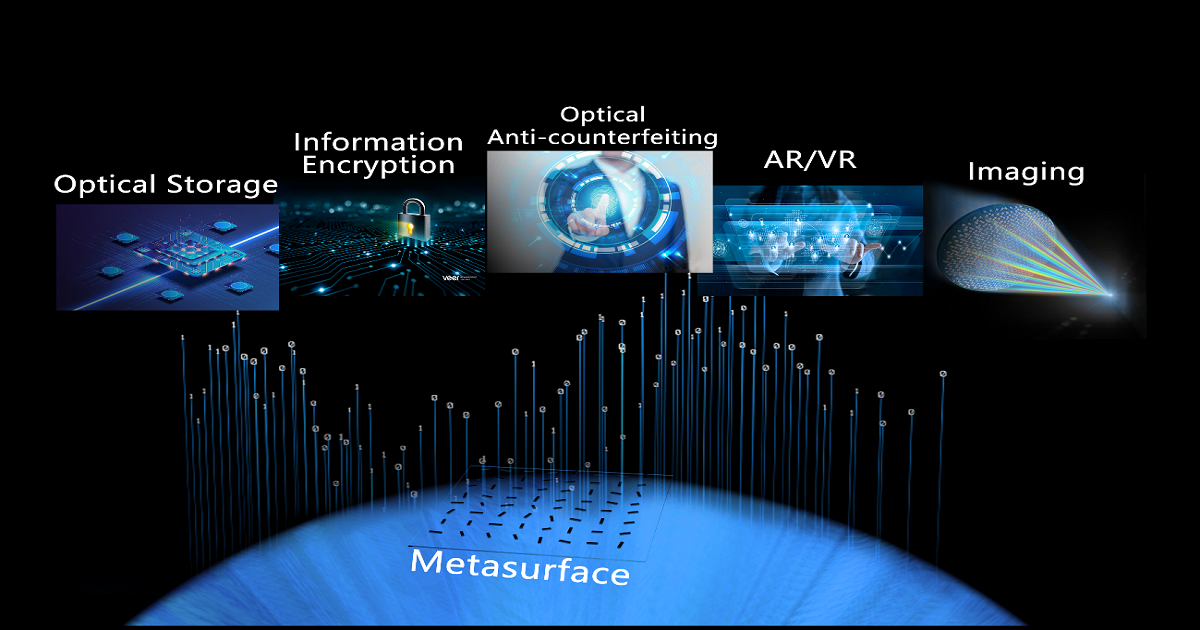Advances in Metasurfaces for Planar Optics and Devices
A special issue of Electronics (ISSN 2079-9292). This special issue belongs to the section "Optoelectronics".
Deadline for manuscript submissions: closed (16 August 2023) | Viewed by 459

Special Issue Editors
Interests: metasurfaces/metamaterials; holography and micro-nano optics
Interests: metamaterials; metasurfaces; terahertz wave; fiber-integrated devices
Special Issues, Collections and Topics in MDPI journals
Interests: metasurfaces; holography
Special Issue Information
Dear Colleagues,
Motivated by the eagerness of planar photonic devices towards being thin, lightweight and flexible, research on metasurfaces has provided a general platform to implement advanced light integration with miniaturization, low-cost, multi-channel or even multifunctionality features. In the past ten years, we have witnessed a revolutionary step in planar optics driven by metasurfaces, which has enabled a new way to precisely manipulate optical properties, such as amplitude, phase, polarization states and frequency at a subwavelength scale. Metasurfaces have provided new opportunities for ultrathin planar elements and devices for advanced light integration, while their fabrication requires only single-step patterning. Therefore, metasurfaces can facilitate the deployment of planar devices and systems in various fields requiring high integration, including imaging, computing, storage, sensing, display, information encryption, optical communications, and fundamental physics. Benefiting from their ultrathin nature and unprecedented capability to control light propagation in free-space or on-chip, metasurfaces enable tasks that are not possible with classical optical techniques, thus creating promising advances in a variety of scientific fields that impact our daily life. Despite the great success of metasurfaces in planar optics and devices, we must face the fact that many long-existing problems still do not have successful solutions, including dynamic control, the trade-off between efficiency, bandwidth and functionality, chromatic control, integration with other platforms, large-scale fabrication cost, and so on. In this issue, we welcome contributions regarding recent advances in the planar metasurface-related fields, including (but not limited to):
- Metalens;
- Meta-holography;
- Meta-nanoprinting;
- Metasurfaces for optical computing;
- Tunable metasurfaces;
- Nonlinear metasurfaces;
- Multi-layer metasurfaces;
- Inverse design and artificial intelligence metasurfaces;
- New physics in metasurfaces;
- Planar metasurfaces for electromagnetic/light manipulation;
- Fabrication technology for metasurfaces;
- Applications of metasurfaces.
Prof. Dr. Guoxing Zheng
Prof. Dr. Jinhui Shi
Dr. Zile Li
Dr. Juan Deng
Guest Editors
Manuscript Submission Information
Manuscripts should be submitted online at www.mdpi.com by registering and logging in to this website. Once you are registered, click here to go to the submission form. Manuscripts can be submitted until the deadline. All submissions that pass pre-check are peer-reviewed. Accepted papers will be published continuously in the journal (as soon as accepted) and will be listed together on the special issue website. Research articles, review articles as well as short communications are invited. For planned papers, a title and short abstract (about 100 words) can be sent to the Editorial Office for announcement on this website.
Submitted manuscripts should not have been published previously, nor be under consideration for publication elsewhere (except conference proceedings papers). All manuscripts are thoroughly refereed through a single-blind peer-review process. A guide for authors and other relevant information for submission of manuscripts is available on the Instructions for Authors page. Electronics is an international peer-reviewed open access semimonthly journal published by MDPI.
Please visit the Instructions for Authors page before submitting a manuscript. The Article Processing Charge (APC) for publication in this open access journal is 2400 CHF (Swiss Francs). Submitted papers should be well formatted and use good English. Authors may use MDPI's English editing service prior to publication or during author revisions.
Keywords
- planar optics
- metasurface
- metalens
- holography
- nanoprinting
- light manipulation
Benefits of Publishing in a Special Issue
- Ease of navigation: Grouping papers by topic helps scholars navigate broad scope journals more efficiently.
- Greater discoverability: Special Issues support the reach and impact of scientific research. Articles in Special Issues are more discoverable and cited more frequently.
- Expansion of research network: Special Issues facilitate connections among authors, fostering scientific collaborations.
- External promotion: Articles in Special Issues are often promoted through the journal's social media, increasing their visibility.
- e-Book format: Special Issues with more than 10 articles can be published as dedicated e-books, ensuring wide and rapid dissemination.
Further information on MDPI's Special Issue polices can be found here.








